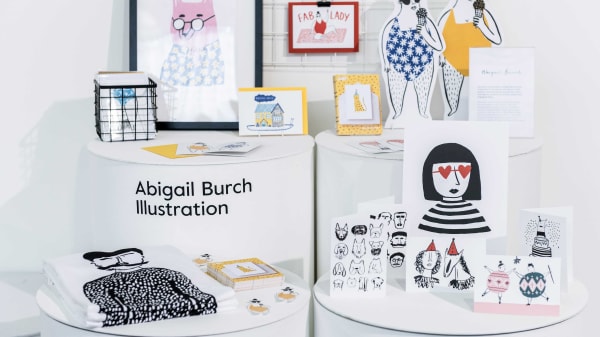How to become self-employed
After graduating you may decide to work for yourself rather than join an existing studio, practice or company. Being self-employed gives you more control over when, where and how often you work. It’s an opportunity to create your own product or service.
If you are self-employed you will need to find your own clients or customers and generate enough income to pay for work expenses (like studio rent or materials) as well as your living costs.
You will also need to keep financial records and pay taxes. You can do this yourself online or pay an accountant to help you.
Other options
If you’re looking for an alternative to self-employment (which the Inland Revenue calls being a ‘Sole Trader’), there are other options:
You can register a limited company at Companies House by completing an online form and paying a small fee. This can be useful if you are planning to grow your business and employ people in the future. It can sometimes be good for your business ‘image’. Some clients will only trade with limited companies.
If you want to work together with other self-employed people you could start a partnership. You would all need to agree a legal contract that sets out each partner’s responsibilities.
You can set up a social enterprise or a community interest company if your main purpose is to help people or communities.
Defining your product
If you want to work for yourself in the creative industries it’s important to decide what product or service you plan to offer customers. You need to develop your creative ideas into something that people want to buy and use.
You may need to set aside some time upfront for product development. You can test your product at an early stage by:
- showing it to customers
- collecting feedback in a focus group
- at a pop-up shop
- by asking questions on social media.
You can use the feedback to improve your product.
You should be aiming to produce something that your customers will be happy to pay for - not just what you’d like to make! Think about - and, if you can, research - what they might need or want.
Decide on your Business Model by finding the right balance between:
- what your customers are prepared to pay
- the income you need to make
- the prices that other people are charging in your target market.
You’ll find masses of in-depth information on how to price your product or service in UAL's How to cost and price your work guide (PDF 445KB).
Make sure your product is something you are confident you can deliver and that you have the materials, time and budget to design, make and market it.
If you think you have created something original that you want to protect, these resources will give you more information about managing your Intellectual Property (IP) for creatives.
Communicate
Once you have designed your creative product or service, you need to let people know about it.
To communicate well you need to be clear and straightforward and use simple language. Consider what is important to your customers; put yourself in their shoes. Think about why they would buy your product, what benefits it delivers or what problem it solves for them.
Create a profile of your target customer or client, including:
- their age bracket
- where they live
- how much they can afford to/would be willing to pay for your product
- what other products or services they are likely to buy
- their personal tastes/style/lifestyle.
Creating a brand will help build a consistent identity for your product and reach more people. A brand becomes especially important when you start to build a portfolio of products; it tells people that they come from the same source.
There are many different channels you can use to reach your target market:
- email campaigns
- social media platforms
- e-commerce marketplaces (Etsy, eBay etc.)
- pop-up shops
- your brand’s website
- your own online store.
It’s a good idea to make a communications plan to coordinate your messages and get the most impact from them.
You can find more information and resources on Marketing and how to pitch your work
Related content
-

Image by Alys Tomlinson
How to manage your IP
Learn about the steps you can take to manage your intellectual property (IP) and protect your interests as a creative.
-

Daisy Hristova, MA Fashion Entrepreneurship and Innovation, London College of Fashion © Alys Tomlinson
How to find freelance work
Read our tips for promoting your skills and services in order to attract freelance work and clients.
-

Abigail Burch's stand at Pulse 2018. Photo by Damian Griffiths
How to get paid
Read our guidance on how to invoice and get paid for your work if you freelance or set up your own business.
-

Student studying at a desk
-

Artist drawing
-

Image courtesy of UAL

